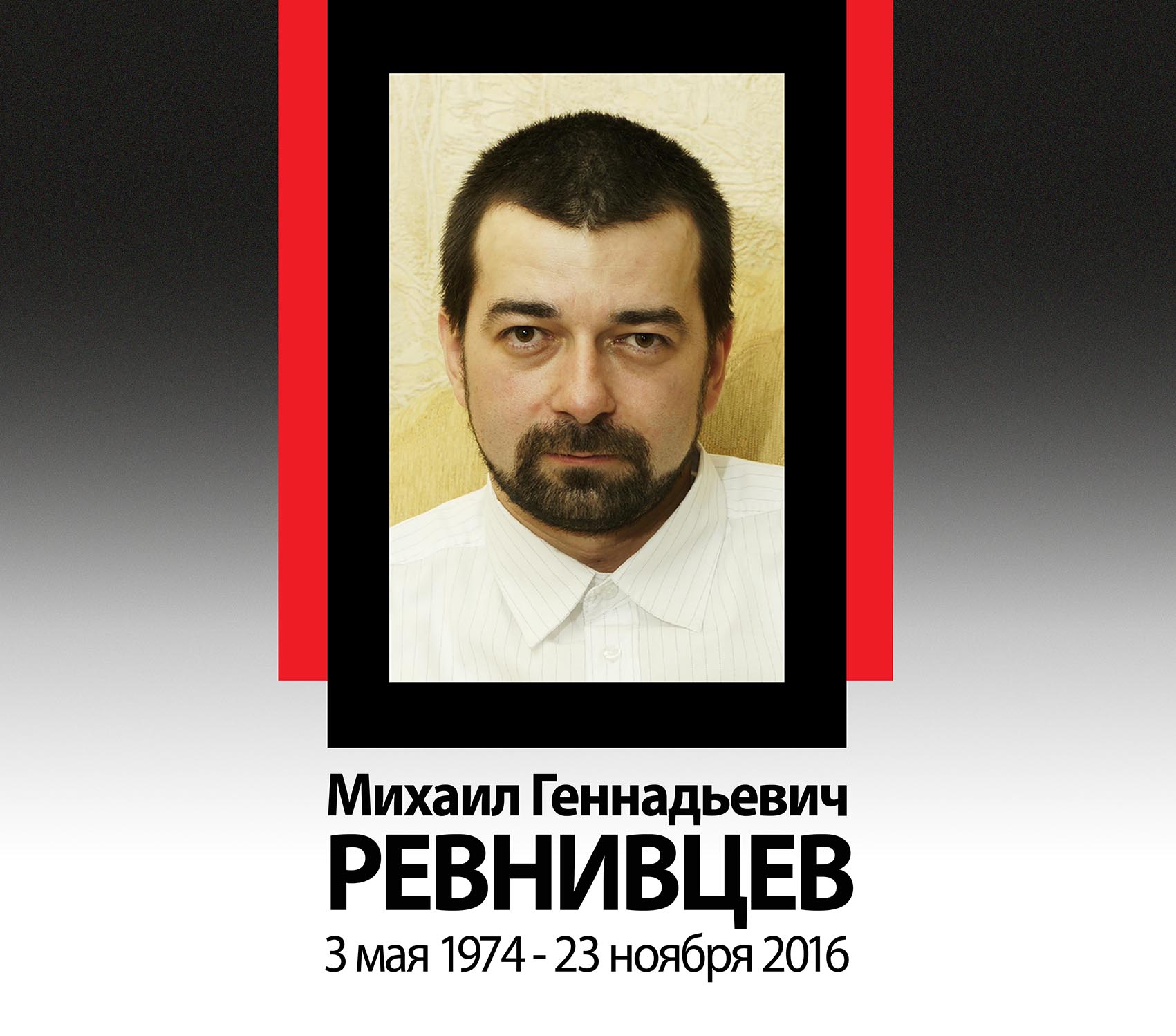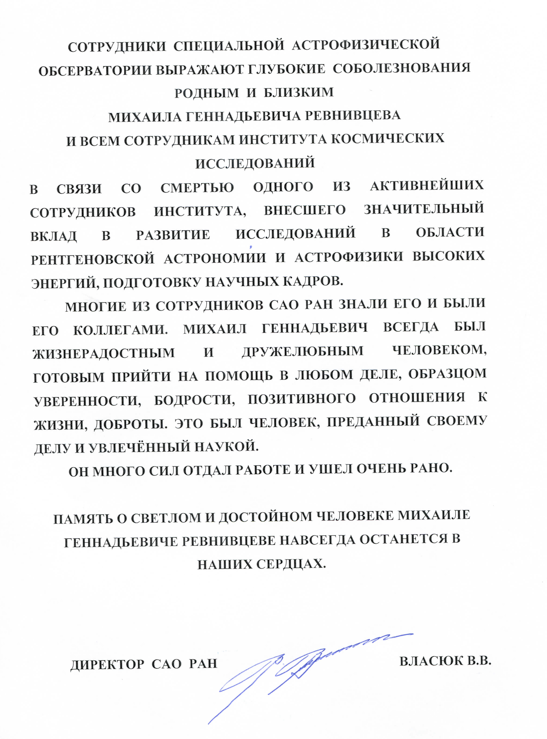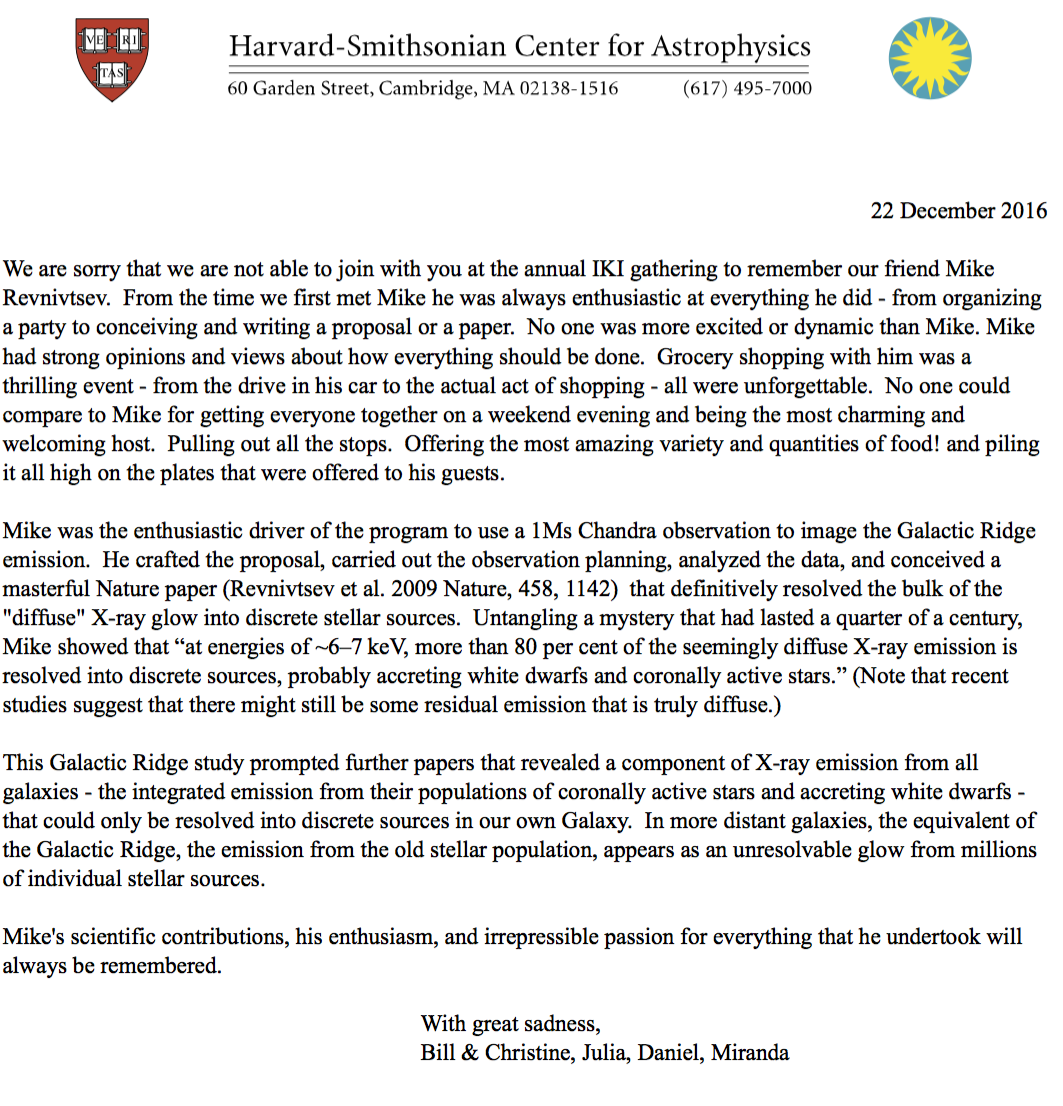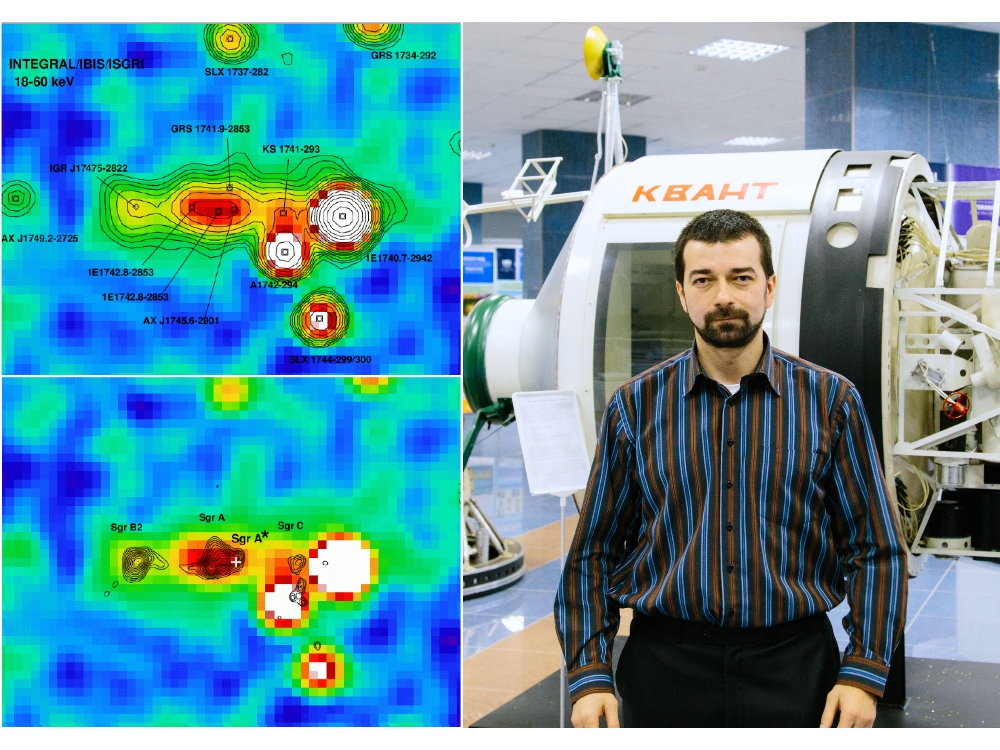Письма соболезнования. Михаил Геннадьевич Ревнивцев

23 ноября 2016 года после тяжелой болезни скончался Михаил Геннадьевич Ревнивцев, заведующий лабораторией экспериментальной астрофизики ИКИ РАН, ученый с мировым именем в области рентгеновской астрономии и астрофизики высоких энергий.
Михаил Геннадьевич родился в 1974 году в г. Тольятти. В 1991 году поступил в Московский физико-технический институт на кафедру космической физики. С 1995 года начал работать в Институте космических исследований в Отделе астрофизики высоких энергий. В 1997 году с отличием закончил МФТИ и поступил в аспирантуру ИКИ РАН, в 1999 году успешно защитил кандидатскую диссертацию, а в 2006 году - докторскую. В 2016 году был избран Профессором Российской академии наук.
Михаил Геннадьевич - автор ряда ярких научных открытий, среди которых решение многолетней загадки происхождения рентгеновского фона Галактики. Построив уникальную рентгеновскую карту Галактики по данным обсерватории RXTE, он доказал что фон складывается из излучения многочисленных аккрецирующих белых карликов и коронально активных звезд. За это и другие открытия Михаил Геннадьевич был награжден в 2006 году медалью им. Я.Б. Зельдовича Международного комитета по исследованию космического пространства, а в 2008 году стал одним из первых лауреатов премии Президента Российской Федерации в области науки и инноваций для молодых ученых.
Михаил Геннадьевич начал свою научную деятельность с работы с данными космических обсерваторий "Мир Квант" и "Гранат". Он играл ключевую роль в успехе международной астрофизической обсерватории "ИНТЕГРАЛ" и в подготовке к рентгеновскому обзору всего неба обсерватории "Спектр-Рентген-Гамма", а также был идейным вдохновителем проекта "Монитор Всего Неба" на борту Международной Космической Станции.
Михаил Геннадьевич посвящал много времени работе со студентами и аспирантами, воспитал несколько кандидатов физико-математических наук, принимал активное участие в жизни Института, занимался популяризацией науки в России.
Миша был не только выдающимся ученым, но и потрясающим другом и коллегой, всегда готовым прийти на помощь. Отдел астрофизики высоких энергий глубоко скорбит об утрате. Светлая память о Михаиле Геннадьевиче Ревнивцеве навсегда сохранится в наших сердцах.
— Тяжелая болезнь и безвременный уход от нас Миши Ревнивцева — это страшный удар по его семье и детям, громадная потеря для нашего отдела и для всей рентгеновской астрономии в нашей стране и в мире. Мы все знали Мишу как талантливого, блестящего и признанного ученого, человека, обладавшего своим почерком в науке, своим ярким и обычно неожиданным подходом к решению задач, которые он ставил перед собой. Он обладал необычайной работоспособностью, пользовался громадным уважением коллег и был центром притяжения для окружающих его молодых ученых. Астрономы, даже далекие от нашей тематики, чувствовали его силу и преданность науке. У него была международная известность и высочайшая репутация профессионала и эксперта в своем деле. Михаил Геннадиевич был не просто видным членом нашей группы, он был одним из ее основных стержней.
Прошу прощения, что из за сильного бронхита не решился нарушить рекомендацию врача отменить, как минимум, на три недели все полеты.
Прошу передать мои искренние соболезнования Ане, родителям и всем родственникам Миши, его друзьям и коллегам.
Рашид Сюняев
Дорогие коллеги,
сотрудники отдела астрофизики и физики космической плазмы Института прикладной физики РАН (г. Нижний Новгород) выражают соболезнования коллегам и родным Михаила Ревнивцева. Мы запомнили Михаила как выдающегося учёного в области рентгеновской астрономии, талантливого организатора, душевного и отзывчивого человека. Помним его научные выступления в Нижнем Новгороде. Ценим его помощь и поддержку в Москве на ежегодной конференции по астрофизике высоких энергий и в Гархинге в Институте астрофизики Общества имени Макса Планка. Мы вместе радовались его успехам, получению государственной премии. Верили в его будущие открытия, в его новые идеи. Мы скорбим вместе с вами о преждевременном уходе Михаила. Мы навсегда сохраним светлую память о нём.
Академик В. В. Железняков, чл.-корр. РАН Вл. В. Кочаровский,
М. А. Гарасёв, Е. В. Деришев, С. А. Корягин
Дорогие коллеги!
Только что получил письмо о страшном несчастье, постигшем всех нас…
Безвременный уход Миши, блестящего ученого с фантастической работоспособностью, большими перспективами и замечательными человеческими качествами, — огромная потеря для всей науки. Передайте, пожалуйста, мои соболезнования его семье.
С уважением и печалью
К. Постнов

Уважаемые Коллеги ИКИ РАН
С большим прискорбием мы восприняли печальную весть об уходе из жизни нашего коллеги Михаила Ревнивцева.
Мы знали Михаила как одаренного и талантливого ученого, практически каждый год дарившего нам свои яркие научные результаты, рассказывая о них на декабрьских конференциях в ИКИ. С ним всегда было интересно общаться на разные темы в науке и в жизни.
Он инициировал оригинальные научные задачи для 1.5-м телескопа РТТ-150, принимая активное участие в их обсуждении, решении, интерпретации результатов. Его знания и опыт всегда нам помогали и всегда были важны для нас. Михаил был неутомимым тружеником науки. Благодаря его оригинальным научным результатам, имя его стало известным не только в нашей стране, но и среди широкого круга зарубежных ученых.
Примите наши искренние соболезнования от имени всех казанских коллег.
Наши глубокие соболезнования семье и родным Михаила. Светлая ему память.
Ильфан Бикмаев, Наиль Сахибуллин
Казанский университет
СОТРУДНИКИ СПЕЦИАЛЬНОЙ АСТРОФИЗИЧЕСКОЙ ОБСЕРВАТОРИИ ВЫРАЖАЮТ ГЛУБОКИЕ СОБОЛЕЗНОВАНИЯ РОДНЫМ И БЛИЗКИМ МИХАИЛА ГЕННАДЬЕВИЧА РЕВНИВЦЕВА И ВСЕМ СОТРУДНИКАМ ИНСТИТУТА КОСМИЧЕСКИХ ИССЛЕДОВАНИЙ В СВЯЗИ СО СМЕРТЬЮ ОДНОГО ИЗ АКТИВНЕЙШИХ СОТРУДНИКОВ ИНСТИТУТА.
ученый секретарь САО РАН, Кайсина Е.И.


INTEGRAL Picture of the month (December 2016)
MIKHAIL REVNIVTSEV
MAY 3, 1974 – NOVEMBER 23, 2016
On November 23rd, 2016, Dr. Mikhail Revnivtsev from the Space Research Institute of the Russian Academy of Sciences, passed away at the age of 42 in Moscow after a serious illness.
Mikhail (Mike) Revnivtsev was born in 1974 in Tolyatti, Russia. In 1997, he graduated from the Moscow Institute of Physics and Technology. In 1999 and 2006, he received his PhD and habilitation degree from the Space Research Insitute (IKI) in Moscow. In 2008, he was awarded the very prestigious prize for outstanding young scientists by the Russian President. In 2016, he became Professor of the Russian Academy of Sciences.
Mikhail worked at IKI throughout his career. From 2001 to 2010 he also worked in Garching (Germany) at the Max Planck Institute for Astrophysics and Munich Technical University.
Mikhail was one of the leaders of the INTEGRAL scientific community. Besides being highly successful when working with the observatory’s data, he also served as a member of the INTEGRAL Time Allocation Committee and the INTEGRAL Users’ Group. His ideas were pivotal in forming INTEGRAL’s observational strategy and building its legacy.
Mikhail was known world-wide as an outstanding X-ray astronomer, who greatly contributed to the success of a number of X-ray astronomy missions, including Granat, RXTE, Chandra and INTEGRAL. Mikhail has solved the long-standing puzzle of the origin of the Galactic Ridge X-ray Emission, by demonstrating that it is collective emission of thousands of accreting white dwarfs and millions of coronally active stars. He has also developed a new method of distinguishing neutron stars from black holes in X-ray binaries through a combination of their spectral and timing properties. These are just two of the many outstanding results obtained by Mike.
A prominent result by Mikhail connected with the INTEGRAL observatory is his report on the association of IGR J17475-2822, discovered by INTEGRAL, with the giant molecular cloud Sgr B2 in the Galactic Center region (see INTEGRAL POM October 2004). Data from different observatories strongly support the idea that the hard X-ray emission of Sgr B2 is Compton scattered and reprocessed radiation emitted in the past by the Sgr A* source, the supermassive black-hole candidate in the center of our Galaxy.
The IBIS/ISGRI image (top, left; 18-60 keV) shows the inner 3.5 degree by 2.5 degree region of the center of the Galaxy. Contours represent signal-to-noise levels starting at S/N = 5 and increasing with a factor 1.4. The image has a total effective exposure time of 2.3 Ms. The left, bottom image is the same IBIS/ISGRI image, however, now with the brightness distribution of the 6.4 keV iron line as determined by ASCA/GIS, overplotted as contours.
At the photo on the right, Mikhail is in the Space museum at IKI near a model of the KVANT module. For many of us in the INTEGRAL community, Mike was not only a colleague but also a close friend. We deeply regret his loss. Our hearts are with Mike’s family and colleagues in Moscow. Fond memories of Mikhail Revnivtsev will remain forever with us.

Credits:
Eugene Churazov, Roman Krivonos, Alexander Lutovinov, Ilya Mereminsky, Sergei Sazonov, Rashid Sunyaev (IKI, Moscow, Russian Federation)
«Hard X-ray view of the past activity of Sgr A* in a natural Compton mirror», M.G. Revnivtsev, E.M. Churazov, S.Yu. Sazonov, R.A. Sunyaev, A.A. Lutovinov, M.R. Gilfanov, A.A. Vikhlinin, P.E. Shtykovsky, M.N. Pavlinsky, 2004, A&A 425, L49
Source: http://www.cosmos.esa.int/web/integral/news-2016
— We lost a great person. I will never forget the first time I met him in Taormina in 1998. Mike was young and promise scientist and our expectation were right. I big hug to his family.
Angela Bazzano
— these are indeed very sad news. I have very fond memories of working with Mike at the ISDC in the early days of the INTEGRAL mission and of the many occasions to discuss with him and to enjoy life throughout the years. Please send my deepest condolences to his family.
Volker Beckmann
— I was shocked to learn of Misha Revnivtsev’s death. The world of astronomy has lost one of the foremost explorers of the x-ray sky, and those of us who knew him personally lost a great colleague, and a great friend. I treasured my own conversations with Misha during the annual high-energy astrophysics meetings at IKI. Great encyclopedic knowledge, combined with deeply original thinking and powerful intuition. Always a new insight, always something to think about afterwards. I will remember his larger than life personality, his modesty, his kindness and empathy, his calm demeanor and his deep passion for science and for life. It is so sad that he is no longer with us. Please pass on my deepest condolences to Misha’s family.
Yura Levin
— I heard about the tragic loss of Mikhail. I meant to send you, as ones of his closest colleagues, my condolences. Please transmit them to whoever you see appropriate. He was young, very bright and will be missed.
Didier Barret
Jens Chluba has just informed me about the terribly sad news from Mike Revnivtsev. I had no idea about his sickness. <…> I thought everything would be fine with him by now.
I remember very well his very young family at MPA during the time he was a student, and how proud the High Energy group was of him at the time he was recognised by the Russian Government. I also vividly remember his picture with Medvedev. He was active, happy, and strong at his work, and I admired him for how he was able to cope with work challenges and serious family problems.
These things are particularly hard to accommodate when they involve young people with such a great future perspective, and I guess it is even harder if you have supervised him during his early career years.
Please transmit my sincere condolences to his family and to the entire High Energy group at MPA, which I would like to make extensive to Sazonov and the other colleagues at IKI in Moskow.
Dr. Carlos Hernández-Monteagudo
— This is very sad news. Mike was a wonderful scientist and a great colleague, with which we worked construvctively and always in good harmony for many years with INTEGRAL, in the TAC, in the IUG and in a variety of other capacities connected with our observatory. I had not been aware that he was so gravely ill, and it is very sad to hear htat he has passed away.
Please forward my condolences to his wife and family.
Ed van den Heuvel
— This is shocking and unexpected for us, not knowing about his illness. I am going to miss him as a good friend and excellent scientist. I always enjoyed interacting with him about our science, our political interests and personally.
My thoughts are with his wife, children and family.
Wim Hermsen
— This is a great loss indeed for the Astrophysics community. Mike was a great scientist and a very pleasant person. My deepest condolences to his family.
J.P. Roques
— I heard about Mike and am so saddened by this news. He was such a great guy and scientist, and far too young. Life is so fragile. Will there be a service? I am so sorry about this…
Mike was really great and will be dearly missed. I remember many nice evenings with him in Garching and Munich and also am still extremely grateful for when he took a day off to show me around Moscow after the Zeldovich celebration. That was a really great day and I many times think back to it. I wished had had a chance to return the favor, but I sadly never managed to invite him for a visit. I am so sorry for Anya and his kids. It must be horrible for them. My thoughts are with them. Please send them my sincerest condolences.
Jens Chluba
— I just learned the very sad news of Mike’s passing. A real tragedy for one so young and talented and with a young family. Words can’t express my feelings. Please pass on my sincerest condolences to his family, friends and colleagues.
David Buckley
— These are very sad news indeed and a great loss both personally and professionally for our community. My thoughts go out to Mike’s family and friends and also hope our condolences can be passed on.
Peter Kretschmar
— This is indeed very bad news, a big loss professionally and humanly. Please bring our condolences to Mike’s family.
Diego Götz
— this is indeed very sad news. I knew that Mike was sick, but I did not expect such a tragic event. Please express my condolences to the whole group at IKI and to Mike’s family. This is indeed a major loss also for our scientific community.
Marco Feroci
— this is a tragic news. This is a loss for the entire scientific community, beside being a horrible loss for the family and your institute.
We send our deepest condolences to Mike’s family. He has been a greatly estimated colleague, and his contribution to science has been enormous.
Enrico Bozzo (on behalf of the whole team)
ISDC — Science data center for Astrophysics
— We are shocked and sad about this news. Mike was a wonderfully lively, inspiring, constructive, creative, and friend-like colleague in our INTEGRAL community, we also have fond memories especially from the the time while he had a fellowship at the Garching Universe cluster. Please convey to his family our condolences, as well as these extremely positive memories of Mike. Unbelievable.
Roland Diehl (with his friends in Garching)
— please, bring our condolences to the family and all Russian colleagues from the whole IBIS team.
I had the priviledge to work with Mike for some time at the beginning of the survey and had a constructive exchange with him at his IUG time. As you all know was a very talented scientist, front line men and great person… he left an abyss for all of us.
Pietro Ubertini
— I am shocked hearing the tragic news about Mike. He was an outstanding, very excellent scientist and a very pleasant colleague. I enjoyed every moment of his company. Truly an unbelievable loss.
Please convey my best wishes and regards to his family.
Christoph Winkler
— I learned today that Mike Revnivtsev prematurely died on 23 November after a long illness. We lost a bright astrophysicist and a very charming person with whom we had the privilege to discuss during several IUG meetings. I have memories of very pleasant chats with him, full of humanity, not only outstanding competence. I wish that Sasha could bring my condolences to his family.
Carlo Ferrigno
ISDC — Science data center for Astrophysics
— I just learnt the very sad news about Mike Revnivtsev, and I am still stunned and deeply saddened. Please convey my sincerest condolences to his family, and extend them to all his friends and colleagues.
Jose Alberto Rubino-Martin
Instituto de Astrofisica de Canarias
— I have just heard the sad news of the death of Mikhail Revnivtsev. I have very fond memories of Misha, who was such a brilliant and kind person, and a privilege to work with. This is very sad, and he will be missed.
I have no contact with his family, but at least I’d like to pass to you and to you colleagues at IKI my sincere condolences.
Andrea Merloni
— I am deeply regret to hear from Irek Khamitov that Dr. Mikail Revnivtsev has passed away. We lost a friend and a scientist. His works will be kept in the common memory of the civilisation, and his memories in his friends.
Please accept my condolences.
Tansel AK
Istanbul University, Faculty of Science,
Dept. of Astronomy and Sciences
